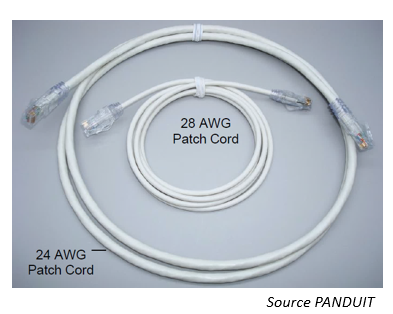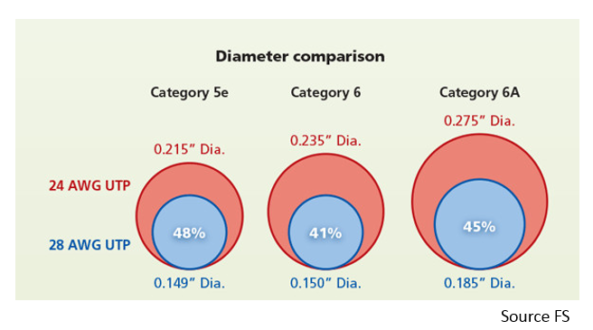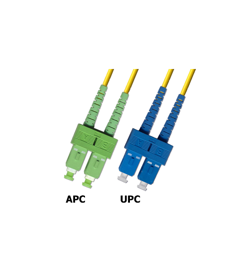The new generation of extremely thin copper patch cords (AWG28/30) and their use in Datacenter.
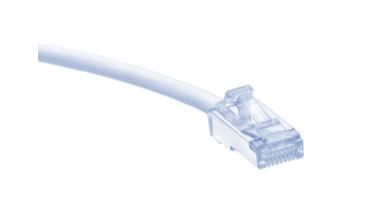
The copper patch cords currentmy deployed are still large and do not facilitate maintenance operation at the level of the copper bords (addition, removal or replacement).
The more the density of the ports increases, the more difficult it becomes to cross-connect, not to mention the difficulty in reading the cable labels and the obstructions to air circulation.
This is why for a few years now, cables with very low diameters have appeared on the market in order to facilitate the operation of copper boards, especially for those with a high number of ports or high density (48 ports per U).
These patch cables are a real solution to this. However, if they can be easily deployed in offices, there is a strong reluctance to deploy them in Datacenters.
For decades, copper cables have been characterized in terms of their diameter by the acronym AWG.
The American Wire Gauge is a unit of measurement that originated in the United States and was later adopted worldwide.
In the cabling architectures that are deployed in data centers, this information is found both in the structured cable used and in the patch cords used. The term gauge is used in conjunction with a number to designate the size of the copper core diameter. The lower the number, the larger the diameter. An AWG26 cable is therefore smaller in diameter than an AWG24 and an AWG28 even smaller.
Currently a cable has a diameter of about 6mm. With AWG 28, we go to diameters around 4mm.
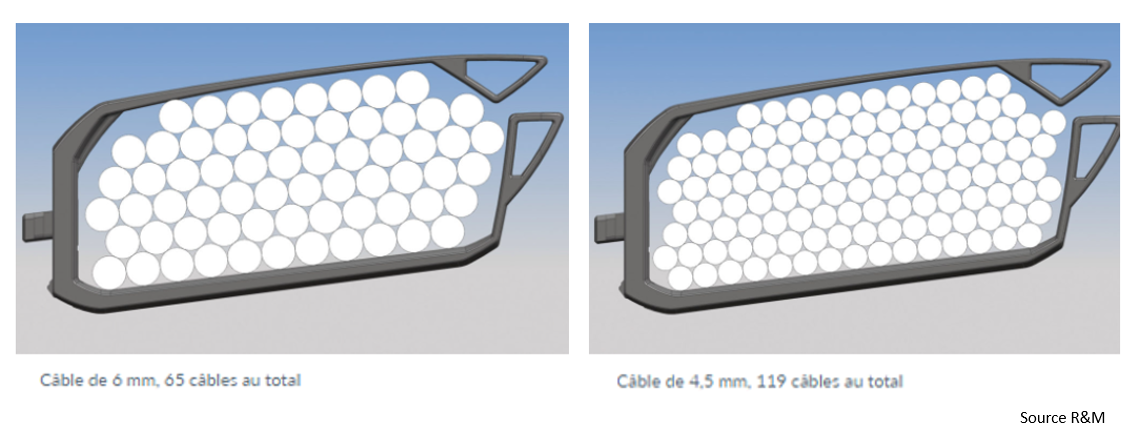
The ANSI/TIA-568-D and ISO 11801 standards define the necessary performance of cables for Ethernet communications. The latest ANSI standard includes support for AWG28 cables but only as patch cords.
In addition, the transmission standards for these cables impose architectural limits on the maximum distances allowed. We often speak about the 100m limit (90+10). However, this theoretical limit is very dependent on the actual quality of the cable. Many manufacturers offer cables whose characteristics exceed the requirements of the standard, allowing them to support longer lengths.
However, the use of smaller diameter conductors leads to the application of new limits. Indeed, the fact that the conductor is thinner leads to higher losses and therefore the maximum total length of a link will be affected downwards.
In order to define the limits between the structured cabling part (Permanent Link) and the patch cord part, a formula exists and introduces downgrading notions. A cable used in structured cabling will have a coefficient of 1 while for these AWG 28 cords, we can have a coefficient higher than 1.9. This will have the effect of reducing the maximum usable length for the patch cord part.
The formula will be :
(downgrade coef * patch cord length) + (downgrade coef * structured cabling length) =< 102 meters.
Where it gets a little more complicated is that the derating coefficients vary depending on the manufacturer.
However, the variations of these coefficients are not so important from one manufacturer to another that we don’t have an idea of the limits quickly enough.
There are cords in Cat 5e / 6 and 6a.
There are U/UTP, F/UTP or U/FTP cords. The main purpose is to reduce the diameter of the cords as much as possible, the shielding would not contribute to maintain a minimum size. The thinnest cables will therefore be U/UTP without any shielding.
Cables are generally available in lengths from 2m to 20m. Some of them support POE.
AWG28/30 cords are a real breakthrough in improving operability in data centers. Anyone who has handled patch cords on 48-port cards will benefit from this. The slack will be more easily accommodated, the combing of cables will be greatly facilitated. These cables have been validated within the Cat6a or class E/Ea standard, performance is guaranteed.
The problems of distance limitation are generally not in Datacenter. The obstacle to their expansion is certainly the unfounded concern about their real performance, the lack of knowledge of their existence, and probably their price.



